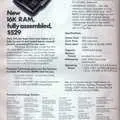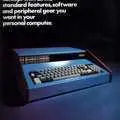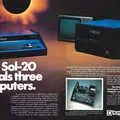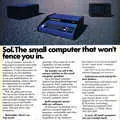Processor Technology Advert - December 1978
From Byte - The Small Systems Journal
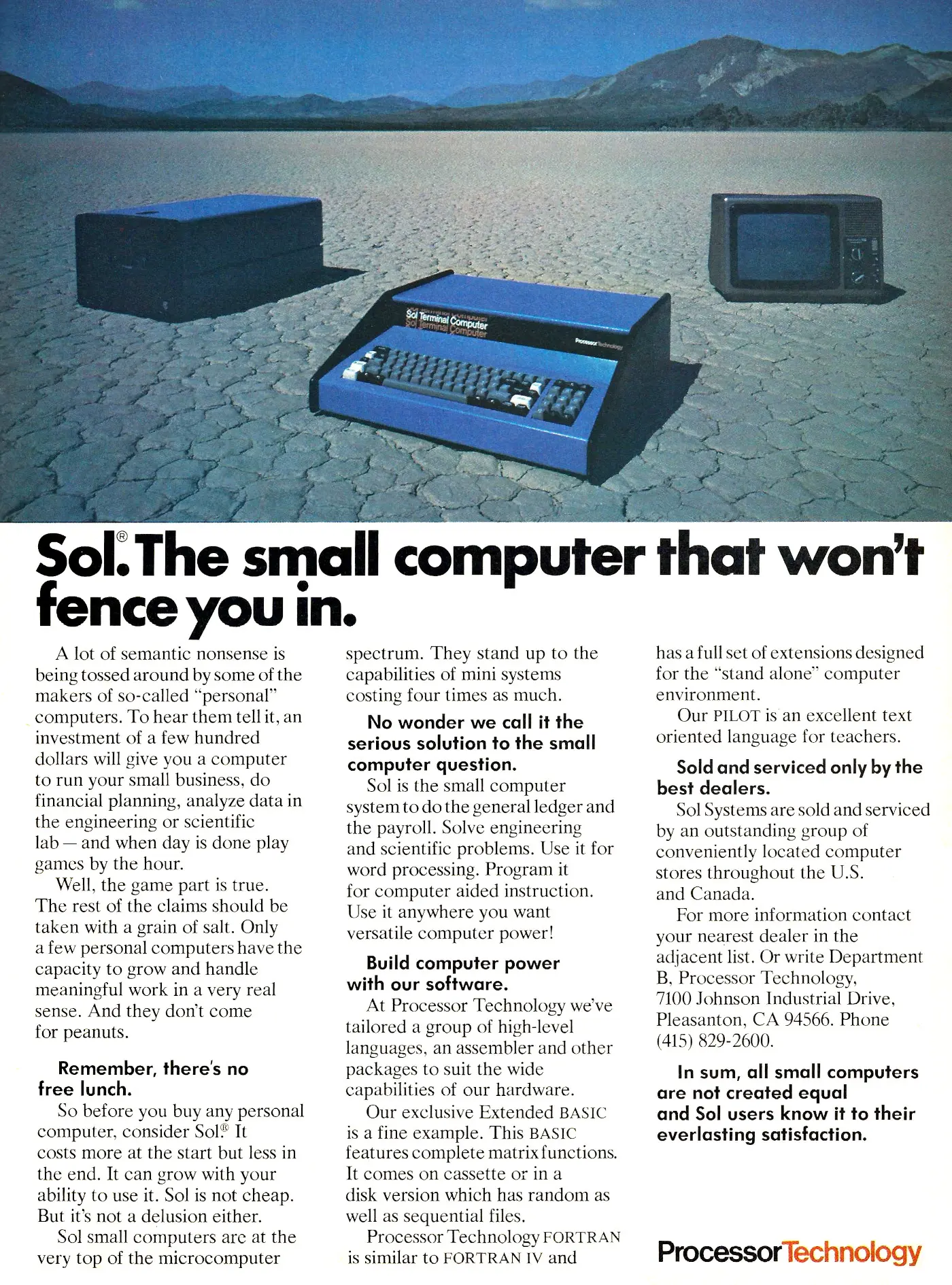
Sol. The small computer that won't fence you in
An interesting advert, nicely shot on a dried lake somewhere in the American south west, that's quite honest, for a change, about the fact that it's not particularly cheap and which disparages the often over-egged claims from many competitors about their systems.
It was an Intel 8080 system running at 2MHz and was apparently unusual in having a built-in composite video driver[1]. About 10,000 Sols were produced[2], mostly in the form of the Sol-20 "Terminal Computer".
The system retailed for $1295 assembled (as at June 1, 1977) - that's about £6,710 in 2025 terms.
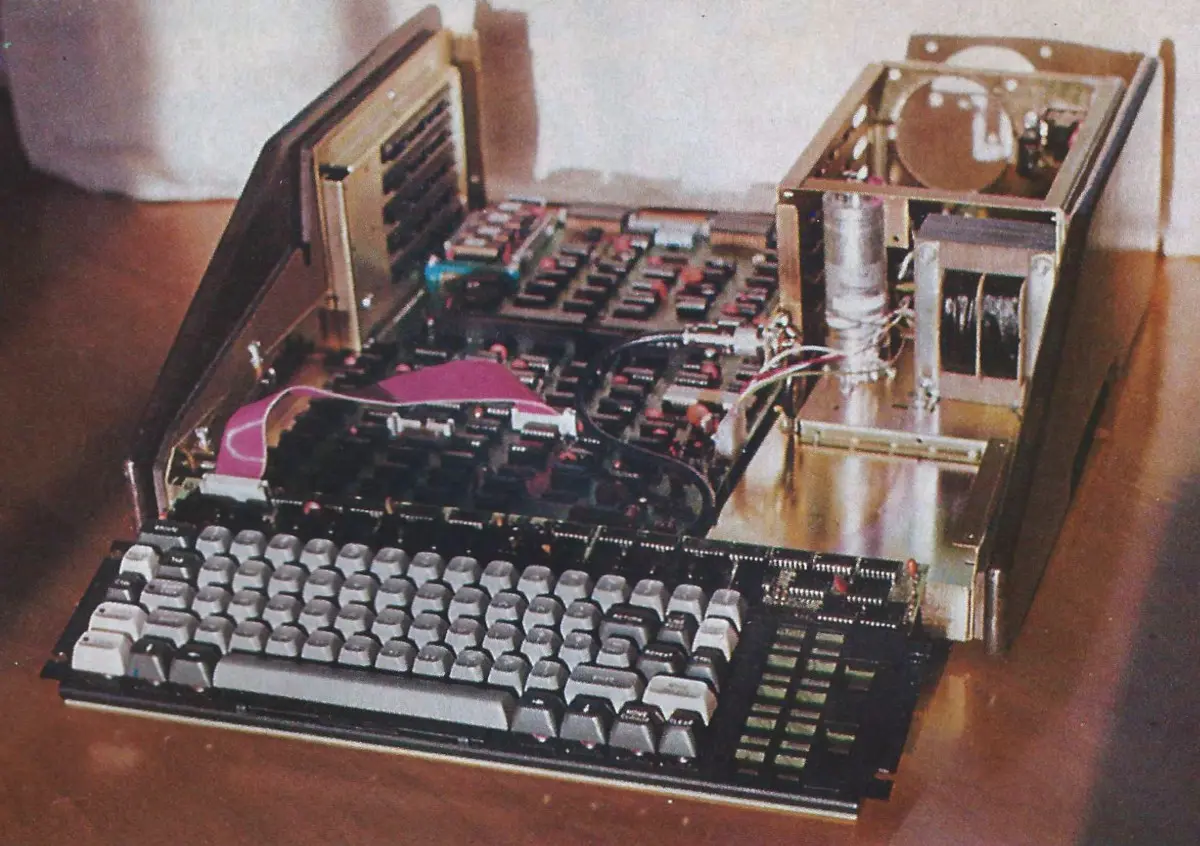
Inside the Sol. From Byte, January 1978
The company's first product in 1975 was a 4K static memory module for the MITS Altair 8800, which sold for $225, or about £1,950 in 2025 money, but they were up to 16K a couple of years later.
Processor Technology became one of the most successful Altair expansion-board suppliers - it was noted at the time that whilst MITS relied on extras, like memory boards, to make any profit, many users would buy the machine and go straight to third parties like Processor Technology for their more-reliable memory modules.
At the same time these owners would likely get a "borrowed" copy of Micro-Soft's Altair BASIC to run on it - Wikipedia notes whilst MITS were selling about 1,000 machine a month, actual sales of the BASIC that went with it were in the low hundreds[3].
The Sol-20 was designed by Lee Felsenstein, who was one of the founder members of the Homebrew Computer Club and who would later design the successful Osborne 1 portable. Processor Technology, the company, was co-founded by another member of the Homebrew club - Robert Marsh[4] - along with Gary Ingram.
In the early 1970s, Felsenstein was one of a small group which had proposed the Community Memory project - the first public computerised bulletin board - with early experiments occuring between 1973 and 1975 using teletype printers.
It was one of the first projects to propose networked computers in public places as a way to encourage social interactions - decades before the commercial internet.
The original project was shut down at the beginning of 1975, but was relaunched in 1985, with newer hardware and improved networking.
The first of the new terminals were placed in a supermarket, a popular restaurant, and the Whole Earth Access Store - a "hip" department store with wide-ranging clientele, according to David Ahl in his write up in June 1986's Personal Computer World, and where one of the original teletype terminals had been located.
When it was set up, it was uncertain whether the project would need to supply helpers at each site, whether the hardware would stand up to the daily battering, or even if the software would stand up or - perhaps worse - not be used at all.
However, by the end of the first year of operation, organisers revealed that people were able to use it without intervention and that there had been no vandalism at all, with each terminal attracting about 600 users and about 1,000 messages per month. Ahl reported:
"Messages on the system are incredibly diverse. Initially it contained mostly 'visible CB radio chatter', but this quickly changed to longer and more substantive messages. At any point in time, the system is now filled with about 3,000 messages, ranging from ads to jokes to poetry to lonely-hearts pleas to nonsense. As might be expected from a system in which messages are not edited or censored, there is something to interest or offend almost everyone[5]".
Date created: 01 July 2012
Last updated: 23 January 2025
Hint: use left and right cursor keys to navigate between adverts.
Sources
Text and otherwise-uncredited photos © nosher.net 2025. Dollar/GBP conversions, where used, assume $1.50 to £1. "Now" prices are calculated dynamically using average RPI per year.
